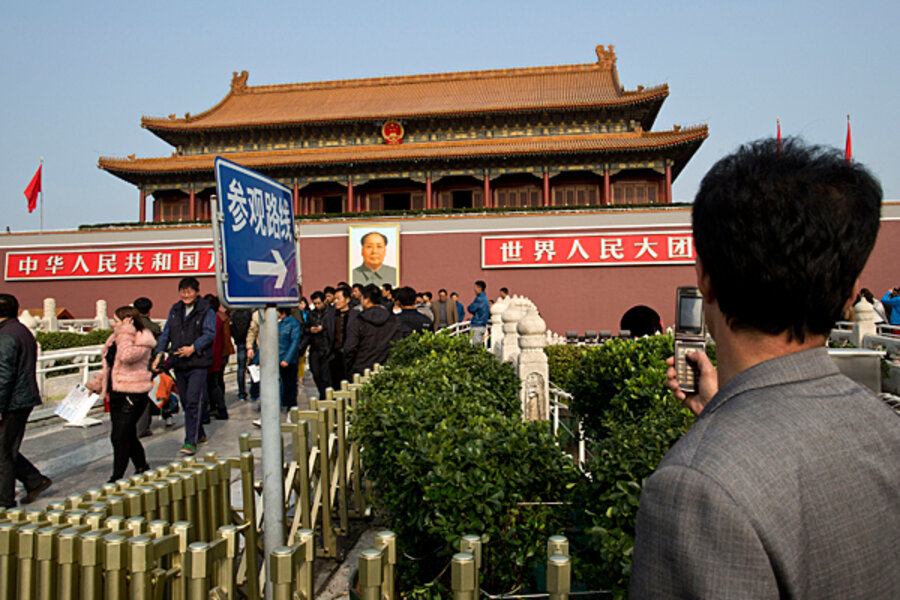Tiananmen Square 'terror plot' raises security stakes
Loading...
| Beijing
Chinese police said Wednesday they had detained five suspected Islamic militants in connection with a fiery car crash Monday in Tiananmen Square, and for the first time called the incident a terror plot.
The attack, which killed two bystanders and the three occupants of the car, was “carefully planned, organized and premeditated,” the police said, according to the official Xinhua news agency.
If the authorities are correct, the incident would represent an unprecedented assault on the iconic heart of Beijing, the entrance to the Forbidden City where hangs a portrait of Mao Zedong.
It raises questions about the scale of discontent among China’s ethnic and religious minorities and about possible shortcomings in the Chinese government’s usually iron-fisted security apparatus.
Police said the car, which burst into flames after crashing into a marble pillar, had been driven by Usman Hassan, whose name suggests he is of Uighur origin. He died, along with his wife and mother who were passengers in the vehicle, police said.
The five suspects, who police said were detained ten hours after the crash, also have Uighur sounding names.
The Muslim Uighur ethnic minority live mainly in the far western region of Xinjiang, where residents often complain that the Chinese government represses their religion and culture.
The Chinese authorities have blamed recurrent outbreaks of violence in Xinjiang on religiously motivated separatist extremists. Such claims are hard to verify since reporters are strictly controlled when they visit the region.
Internet censors were busy on Wednesday deleting social media posts commenting on possible Uighur involvement in Monday’s fatal crash. A 2009 attack on Uighur migrant workers by members of the dominant Han ethnic group in the southern province of Guangdong sparked race riots in Urumqi, the capital of Xinjiang, that left over 200 ethnic Han people dead.
Police said they had recovered “gasoline, equipment full of gasoline, two knives and steel sticks as well as a flag with extremist religious content in the jeep,” Xinhua reported.
They are also reported to have found knives and “at least one ‘jihad’ flag” in the house where the five detained suspects were arrested.
No group has claimed responsibility for the attack and a spokesman for the main Uighur group in exile, the World Uighur Congress, cautioned against believing Beijing’s version of events.
“Beijing has always made these kinds of accusations, but they refuse to make public the reasoning behind them,” spokesman Dilxat Raxit told Reuters. He said he was worried that the incident would prompt authorities “to further repress Uighurs.”








